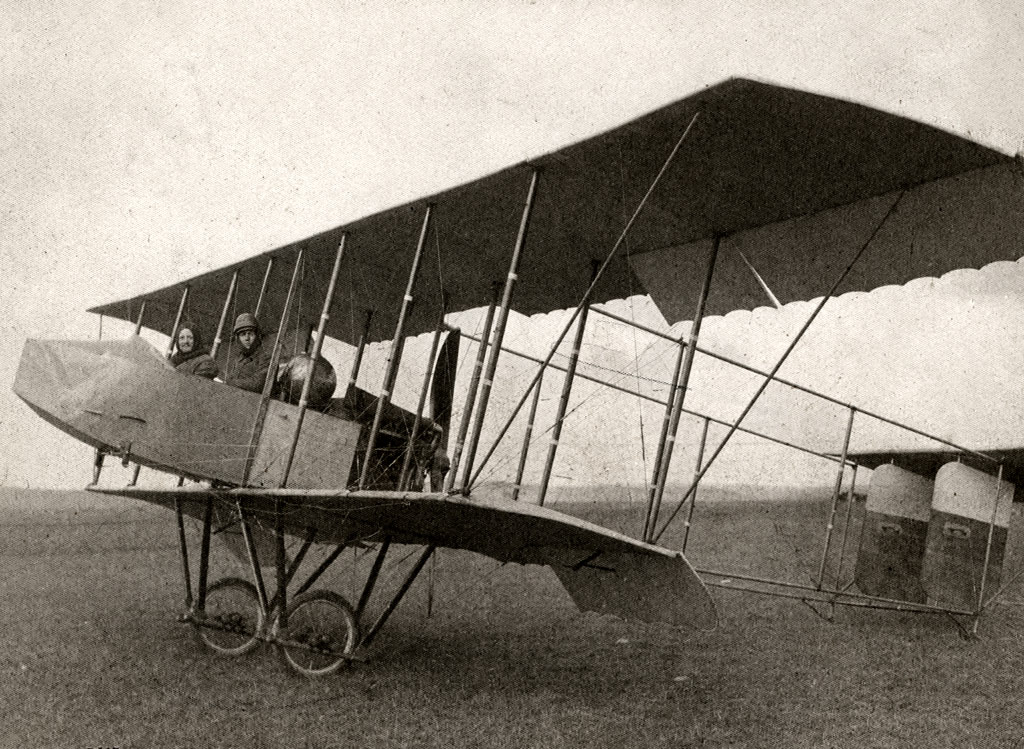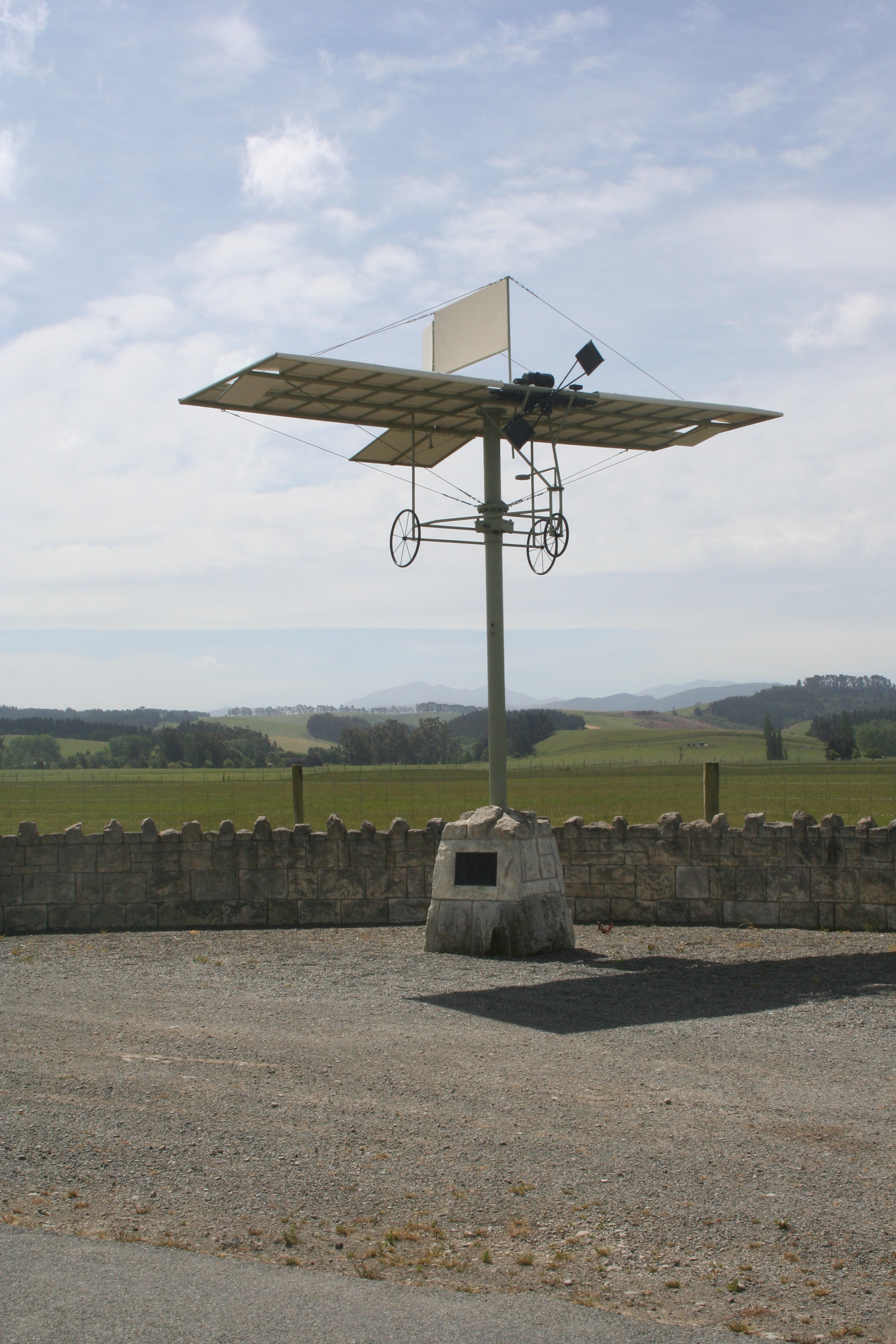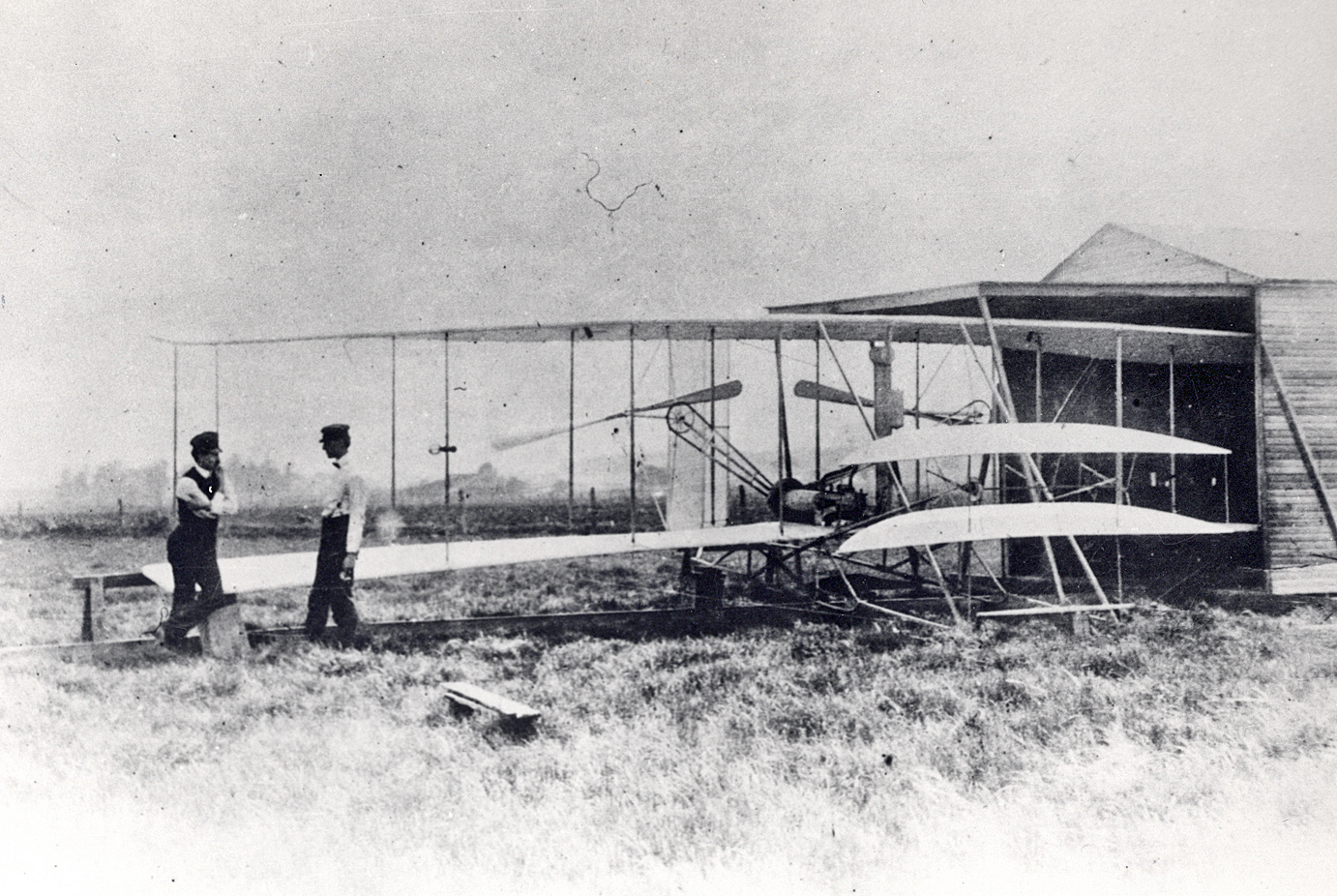|
Ailerons
An aileron (French for "little wing" or "fin") is a hinged flight control surface usually forming part of the trailing edge of each wing of a fixed-wing aircraft. Ailerons are used in pairs to control the aircraft in roll (or movement around the aircraft's longitudinal axis), which normally results in a change in flight path due to the tilting of the lift vector. Movement around this axis is called rolling or banking. Considerable controversy exists over credit for the invention of the aileron. The Wright brothers and Glenn Curtiss fought a years-long legal battle over the Wright patent of 1906, which described a method of wing-warping to achieve lateral control. The brothers prevailed in several court decisions which found that Curtiss's use of ailerons violated the Wright patent. Ultimately, the First World War compelled the U.S. Government to legislate a legal resolution. A much earlier aileron concept was patented in 1868 by British scientist Matthew Piers Watt Boulton ... [...More Info...] [...Related Items...] OR: [Wikipedia] [Google] [Baidu] |
Alieron A-44 (PSF)
An aileron (French for "little wing" or "fin") is a hinged flight control surface usually forming part of the trailing edge of each wing of a fixed-wing aircraft. Ailerons are used in pairs to control the aircraft in Flight dynamics, roll (or movement around the aircraft's Flight control surfaces#Longitudinal axis, longitudinal axis), which normally results in a change in flight path due to the tilting of the Lift (force), lift vector. Movement around this axis is called rolling or banking. Considerable controversy exists over credit for the invention of the aileron. The Wright brothers and Glenn Curtiss fought a years-long Wright brothers patent war, legal battle over the Wright patent of 1906, which described a method of wing-warping to achieve lateral control. The brothers prevailed in several court decisions which found that Curtiss's use of ailerons violated the Wright patent. Ultimately, the World War I, First World War compelled the U.S. Government to legislate a legal r ... [...More Info...] [...Related Items...] OR: [Wikipedia] [Google] [Baidu] |
Flight Control Surface
Flight control surfaces are aerodynamic devices allowing a pilot to adjust and control the aircraft's flight attitude. The primary function of these is to control the aircraft's movement along the three axes of rotation. Flight control surfaces are generally operated by dedicated aircraft flight control systems. Development of an effective set of flight control surfaces was a critical advance in the history of development of aircraft. Early efforts at fixed-wing aircraft design succeeded in generating sufficient lift to get the aircraft off the ground, however with limited control. The development of effective flight controls allowed stable flight. A conventional fixed-wing aircraft uses three primary flight control surfaces– aileron, rudder and elevator to control the roll, yaw, and pitch respectively. Secondary flight control surfaces might include spoiler, flaps, and slats on the wings. The main control surfaces of a fixed-wing aircraft are attached to the airframe i ... [...More Info...] [...Related Items...] OR: [Wikipedia] [Google] [Baidu] |
Matthew Piers Watt Boulton
Matthew Piers Watt Boulton (22 September 1820 – 30 June 1894), also published under the pseudonym M. P. W. Bolton, was a British Classics, classicist, elected member of the UK's Metaphysical Society, an scientist, amateur scientist and an Invention, inventor, best known for his invention of the aileron, a primary Aeronautics, aeronautical Aircraft flight control system#Primary controls, flight control device. He patented the aileron in 1868, some 36 years before it was first employed in manned flight by Robert Esnault-Pelterie in 1904. Boulton was the son of Matthew Robinson Boulton, and as well the grandson of Matthew Boulton, who founded the Soho Manufactory and the Soho Mint. His grandfather also co-founded the Soho Foundry with James Watt, which employed steam engines of the latter's design. Born into a family of significant wealth and mea ... [...More Info...] [...Related Items...] OR: [Wikipedia] [Google] [Baidu] |
Glenn Curtiss
Glenn Hammond Curtiss (May 21, 1878 – July 23, 1930) was an American aviation and motorcycling pioneer, and a founder of the U.S. aircraft industry. He began his career as a bicycle racer and builder before moving on to motorcycles. As early as 1904, he began to manufacture engines for airships. In 1908, Curtiss joined the Aerial Experiment Association, a pioneering research group, founded by Alexander Graham Bell at Beinn Bhreagh, Nova Scotia, to build flying machines. Curtiss won a race at the world's first international air meet in France and made the first long-distance flight in the U.S. His contributions in designing and building aircraft led to the formation of the Curtiss Aeroplane and Motor Company, which later merged into the Curtiss-Wright Corporation. His company built aircraft for the U.S. Army and Navy, and, during the years leading up to World War I, his experiments with seaplanes led to advances in naval aviation. Curtiss civil and military aircraft were some ... [...More Info...] [...Related Items...] OR: [Wikipedia] [Google] [Baidu] |
Richard Pearse
Richard William Pearse (3 December 1877 – 29 July 1953) was a New Zealand farmer and inventor who performed pioneering aviation experiments. Witnesses interviewed many years afterwards describe observing Pearse flying and landing a powered heavier-than-air machine on 31 March 1903, nine months before the Wright brothers flew. Ambiguous statements made by Pearse himself make it difficult to date the aviation experiments with certainty. In a newspaper interview in 1909, with respect to inventing a flying machine, he said "I did not attempt anything practical with the idea until 1904". Biographer Gordon Ogilvie credits Pearse with "several far-sighted concepts: a monoplane configuration, wing flaps and rear elevator, tricycle undercarriage with steerable nosewheel, and a propeller with variable-pitch blades." Pearse largely ended his early flying experiments about 1911 but pioneered novel aircraft and aero-engine invention from 1933 with the development of his "private plane ... [...More Info...] [...Related Items...] OR: [Wikipedia] [Google] [Baidu] |
John J
John is a common English name and surname: * John (given name) * John (surname) John may also refer to: New Testament Works * Gospel of John, a title often shortened to John * First Epistle of John, often shortened to 1 John * Second Epistle of John, often shortened to 2 John * Third Epistle of John, often shortened to 3 John People * John the Baptist (died ), regarded as a prophet and the forerunner of Jesus Christ * John the Apostle (died ), one of the twelve apostles of Jesus Christ * John the Evangelist, assigned author of the Fourth Gospel, once identified with the Apostle * John of Patmos, also known as John the Divine or John the Revelator, the author of the Book of Revelation, once identified with the Apostle * John the Presbyter, a figure either identified with or distinguished from the Apostle, the Evangelist and John of Patmos Other people with the given name Religious figures * John, father of Andrew the Apostle and Saint Peter * Pope John ( ... [...More Info...] [...Related Items...] OR: [Wikipedia] [Google] [Baidu] |
Patent Pool
In patent law, a patent pool is a consortium of two or more companies agreeing to cross-license patents relating to a particular technology. The creation of a patent pool can save patentees and licensees time and money, and, in case of blocking patents, it may also be the only reasonable method for making the invention available to the public. Competition law issues are usually important when a large consortium is formed. History In 1856, sewing machine manufacturers Grover & Baker, Singer, and Wheeler & Wilson, all accusing each other of patent infringement, met in Albany, New York to pursue their suits. Orlando B. Potter, a lawyer and president of Grover & Baker, proposed that, rather than squander their profits on litigation, they pool their patents. This was the first patent pool, a process which enables the production of complicated machines without legal battles over patent rights. In 1917, the two major patent holders for airplanes, the Wright Company and the Curtiss ... [...More Info...] [...Related Items...] OR: [Wikipedia] [Google] [Baidu] |
Wright Flyer II
The ''Wright Flyer II'' was the second powered aircraft built by Wilbur and Orville Wright. During 1904 they used it to make a total of 105 flights, ultimately achieving flights lasting five minutes and also making full circles, which was accomplished by Wilbur for the first time on September 20. Design and development The design of the Flyer II was very similar to the original 1903 ''Wright Flyer'', but with a slightly more powerful engine and construction using white pine instead of the spruce they used in the 1903 machine and the gliders of 1900–1902. An important change was reducing the wing camber to 1-in-25 from the 1-in-20 used in 1903. The brothers thought that reducing the camber would reduce drag, though less lift was actually achieved. With these alterations Flyer II was heavier by some than the 1903 machine. Operational history The Wrights tested the new aircraft at Huffman Prairie, a cow pasture outside of Dayton, Ohio, which is now part of Dayton Aviati ... [...More Info...] [...Related Items...] OR: [Wikipedia] [Google] [Baidu] |
Wing Warping
Wing warping was an early system for lateral (roll) control of a fixed-wing aircraft or kite. The technique, used and patented by the Wright brothers, consisted of a system of pulleys and cables to twist the trailing edges of the wings in opposite directions. In many respects, this approach is similar to that used to trim the performance of a paper airplane by curling the paper at the back of its wings. Description In 1900, Wilbur Wright wrote, "...my observations of the flight of birds convince me that birds use more positive and energetic methods of regaining equilibrium than that of shifting the center of gravity...they regain their lateral balance...by a torsion of the tips of the wings. If the rear edge of the right wing tip is twisted upward and the left downward the bird becomes an animated windmill and instantly begins to turn, a line from its head to its tail being the axis." After Wilbur demonstrated the method, Orville noted, "From this it was apparent that the wings ... [...More Info...] [...Related Items...] OR: [Wikipedia] [Google] [Baidu] |
Wright Glider
The Wright brothers designed, built and flew a series of three manned Glider (aircraft), gliders in 1900–1902 as they worked towards achieving powered flight. They also made preliminary tests with a kite in 1899. In 1911 Orville conducted tests with a much more sophisticated glider. Neither the kite nor any of the gliders were preserved, but replicas of all have been built. 1899 kite The 1899 kite, which Wilbur flew near his home in Dayton, Ohio had a wingspan of only 5 feet (1.5 m). This pine wood and shellacked craft, although too small to carry a pilot, tested the concept of wing-warping for flight dynamics, roll control that would prove essential to the brothers' solving the problem of controlled flight. The Wrights burned the craft along with other trash in 1905. 1900 glider The 1900 Wright Glider was the brothers' first to be capable of carrying a human. Its overall structure was based on Octave Chanute's two-surface glider of 1896. Its wing airfoil was derived from Otto ... [...More Info...] [...Related Items...] OR: [Wikipedia] [Google] [Baidu] |






